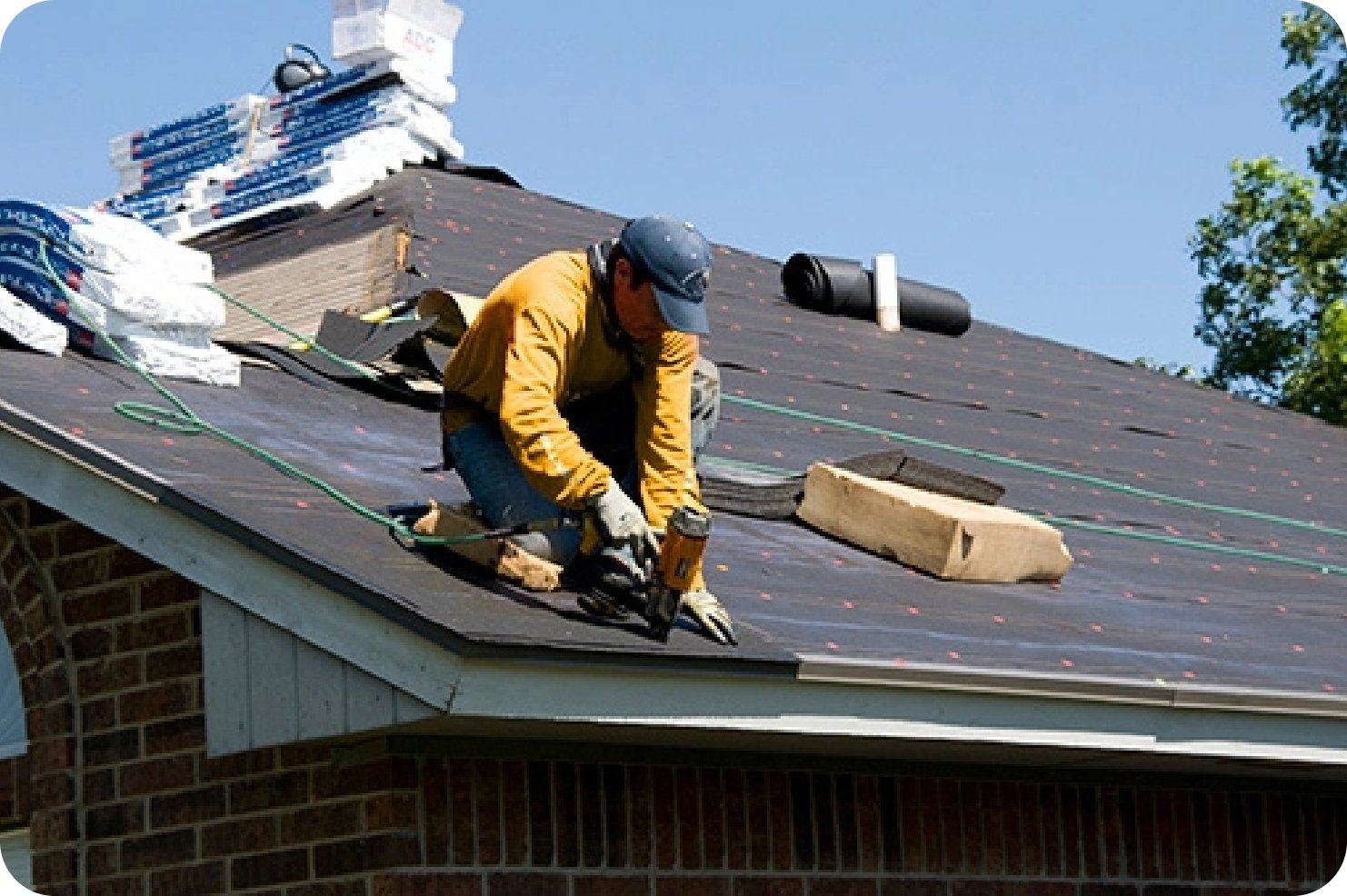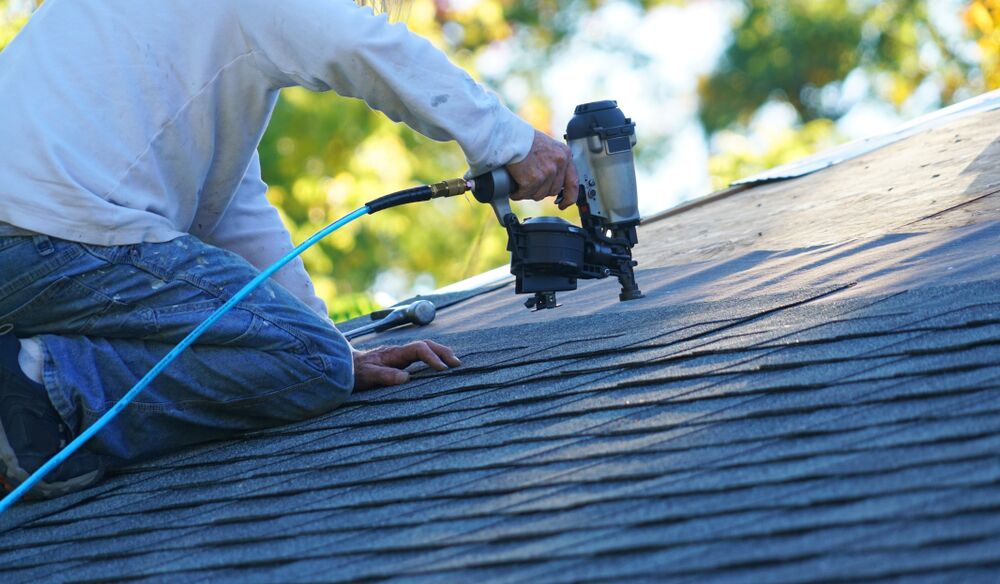Discovering the Different Sorts Of Roofing Systems: Which One Is Ideal for Your Home?
When thinking about the myriad types of roofings offered, it is critical to assess exactly how each choice lines up with your home's special needs, consisting of environment conditions, aesthetic preferences, and structural performance. From the traditional gable roofing that effectively channels rainwater to the modern flat roof covering offering city flexibility, each design provides unique advantages and difficulties.
Gable Roofings
Gable roofs, characterized by their triangular shape and sloping sides, are a popular choice amongst homeowners looking for both visual charm and functionality. This roof design successfully permits efficient water runoff, lowering the danger of water pooling and succeeding damages. Furthermore, the steep slopes create enough attic space, which can be made use of for storage and even transformed into living locations.
Among the primary advantages of gable roof coverings is their capability to endure harsh climate condition. The layout assists in minimizing wind resistance, making them specifically ideal for locations susceptible to tornados. In addition, gable roofings can be constructed making use of a range of products, including roof shingles, tiles, and steel, providing home owners with versatility in layout and budget plan.
From a building viewpoint, gable roofs can enhance the visual charm of a home, using a classic and classic look. Generally, gable roofings continue to be a popular alternative due to their equilibrium of usefulness and design, appealing to a wide array of house owners.
Flat Roofs
While frequently neglected for more conventional roofing system styles, flat roofs offer unique advantages that accommodate specific building demands and modern-day style preferences. These roofing systems are characterized by their minimal pitch, permitting effective use of space, particularly in city settings where taking full advantage of square footage is important.
One significant advantage of level roofing systems is their adaptability. They can be made use of as additional living spaces, such as roof yards, outdoor patios, or solar panel installments, improving the functionality of a home. Moreover, flat roofing systems are usually less complicated and more secure to navigate throughout maintenance, helping with repair services and examinations without the obstacles posed by high slopes.
Flat roofs can additionally be much more cost-effective in regards to materials and installment. With a simpler layout, they typically call for fewer sources, equating right into lower labor prices. However, it's critical to think about water drainage and waterproofing, as flat roofs can be susceptible to pooling water otherwise appropriately developed.

Hip Roofs
Hip roofings stand apart for their stylish layout and structural integrity, making them a prominent selection among property owners. Defined by inclines on all 4 sides, hip roofs offer a healthy aesthetic that complements various architectural designs - roof repair oahu. The balanced nature of these roof coverings helps to distribute weight evenly, improving stability and longevity
One of the essential advantages of hip roofings is their capability to hold up against harsh climate condition. The sloped surfaces facilitate efficient water drainage and snow drainage, minimizing the published here threat of leaks and structural damage. Additionally, the layout reduces wind resistance, making hip roof coverings less prone to wind uplift compared to various other roof types.


Lost Roofing Systems
Shed roofings, as opposed to the intricacy of hip roofing systems, offer a minimal and streamlined style that appeals to modern-day looks. Characterized by a solitary sloping surface, lost roofing systems are often used in modern design, yard sheds, and other useful structures. This simplicity not just enhances aesthetic allure however additionally enables reliable water runoff, making them appropriate for numerous climates.
Among the primary advantages of shed roofings is their cost-effectiveness. With less products needed and an uncomplicated setup procedure, property owners can conserve both money and time. The design likewise allows the unification of huge home windows or skylights, promoting natural light and creating roomy interiors.
Nevertheless, it is crucial to consider the potential drawbacks, including limited insulation options and the need for careful layout to stay clear of too much warmth build-up. In addition, lost roof coverings might not mix flawlessly with typical style, which can be a worry for some house owners.
Eventually, dropped roof coverings offer a functional and elegant roofing solution for those looking for modernity and performance. When choosing a roofing type, assessing individual practical requirements and visual choices will guide home owners to the most effective selection for their special requirements.
Mansard Roofs
Mansard roof coverings, defined by their distinctive four-sided style, are a hallmark of French style that integrates elegance with capability. This architectural design features 2 inclines on each side, with the lower incline being steeper than the upper one. The special configuration permits for added home in the upper degrees, making it an optimal choice for house owners seeking to make the most of useful area without increasing the building's impact.
Among the considerable benefits of a mansard roof is its convenience. It can be adapted to numerous architectural designs, from traditional to contemporary, boosting the aesthetic charm of any home. Furthermore, the enough space produced under the roof covering can easily fit dormer home windows, which enable all-natural light and air flow, further boosting the convenience of the living area.
Nevertheless, possible property owners must take into consideration the maintenance demands connected with click here to read mansard roof coverings. The steep slopes can lead to raised wear from weather exposure, requiring routine examinations and repairs. Additionally, setup prices might be higher compared to easier roof covering layouts as a result of the complexity of construction. Ultimately, a mansard roofing system can be an exceptional selection for those focusing on design and area.
Verdict
Each roof design provides one-of-a-kind advantages, such as the effectiveness of gable roofs, the modern-day appeal of shed roofings, and the stability of hip roofings. Flat roofings offer functionality for city atmospheres, while mansard roof coverings offer added living space in spite of greater installment expenses.
From the timeless gable roofing that effectively networks rain to the contemporary flat roof offering city flexibility, each design presents useful source distinct benefits and challenges (roof repair oahu). Furthermore, the layout minimizes wind resistance, making hip roofings much less susceptible to wind uplift compared to other roofing kinds
Shed roofings, in contrast to the intricacy of hip roof coverings, offer a streamlined and minimalist style that allures to modern-day aesthetic appeals. Each roof covering design offers one-of-a-kind advantages, such as the efficiency of gable roofing systems, the modern charm of shed roofings, and the security of hip roofings. Level roofings supply usefulness for city settings, while mansard roof coverings give added living room regardless of greater installment expenses.
Comments on “Oahu Roofing: Comprehensive Roofing Services in the Oahu Area”